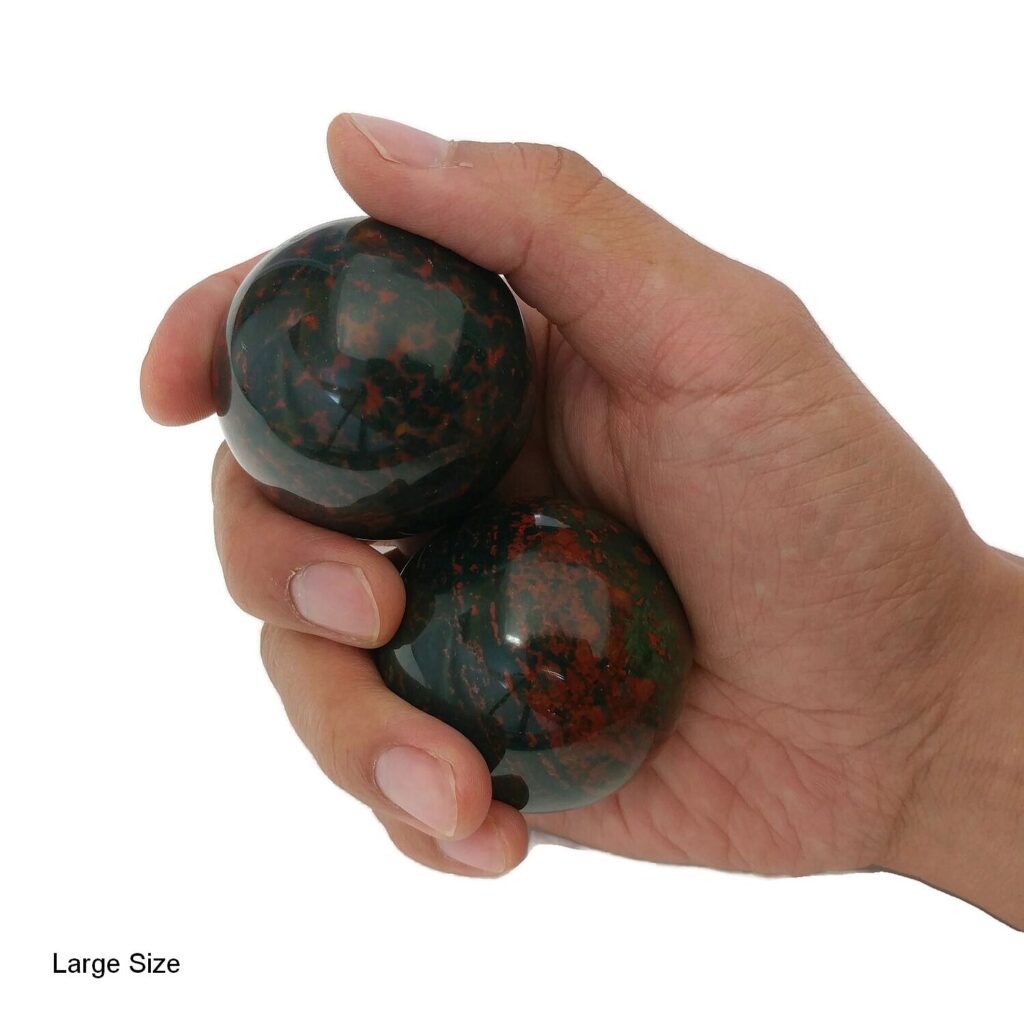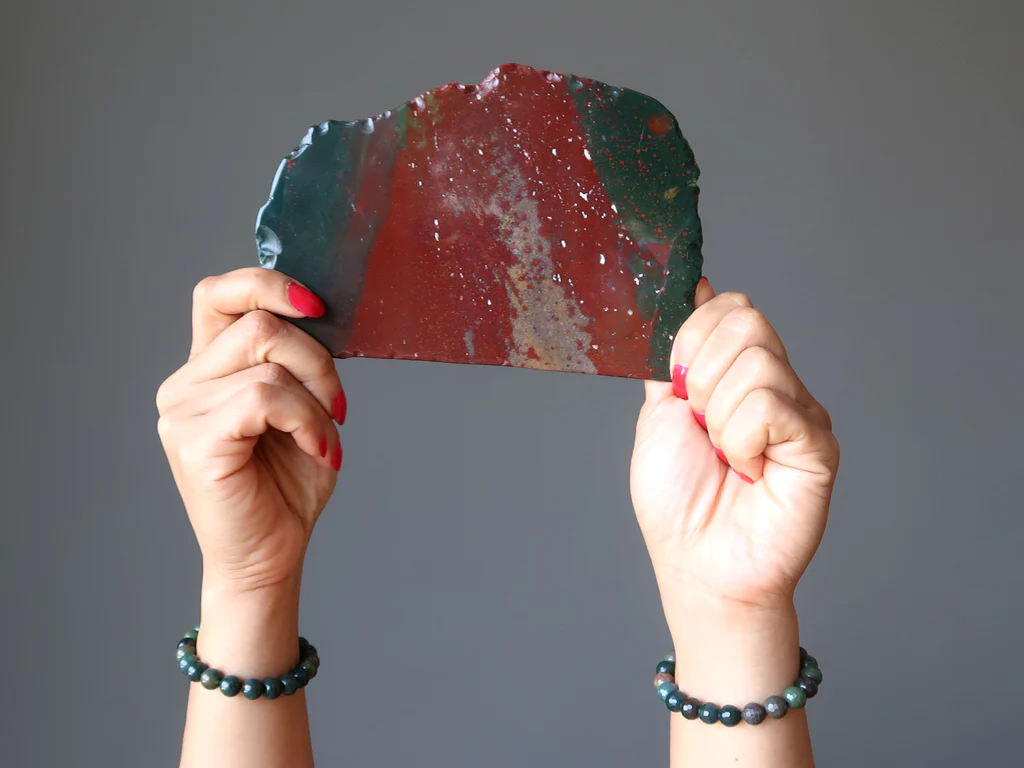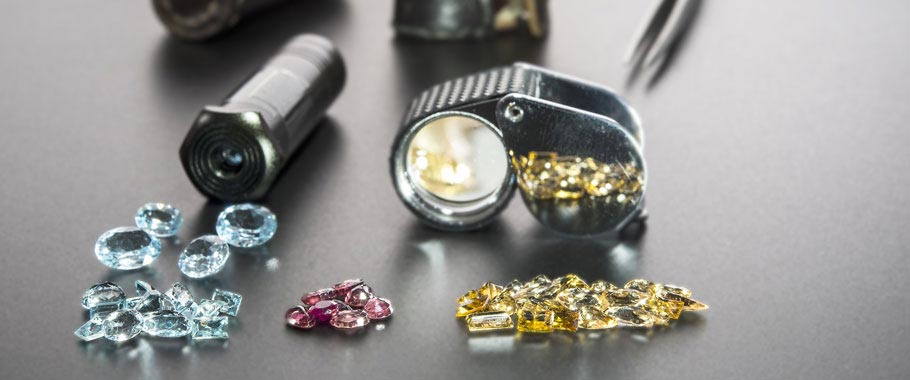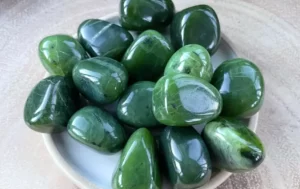As someone interested in gemstones, you know that a specimen’s authenticity determines its value and meaning. This is especially true for bloodstones. Their deep green color and red flecks make them distinctive, but an increase in convincing imitations means you must be able to tell real bloodstones from fakes.
Don’t worry, there are ways for you to evaluate a bloodstone’s authenticity that LotusBuddhas will share in this article. You can inspect it visually, do a streak test, or use advanced gemology tools. Mastering these techniques will give you the skill to accurately assess if a bloodstone is genuine. This protects your investments and keeps your collection credible. With some knowledge and practice, you can be confident about identifying authentic bloodstones.
1. Streak Test
One definitive method to ascertain the authenticity of a bloodstone is the streak test. Begin by obtaining an unglazed porcelain tile, ensuring it’s clean and free of any residues. Next, thoroughly clean your bloodstone to remove any external contaminants. Now, firmly rub the bloodstone against the porcelain tile’s surface with enough pressure to produce a streak.
A genuine bloodstone will leave behind a residue characterized by red scars or marks. If no red residue is evident, or if the residue appears different in color, it’s likely that you do not possess a true bloodstone but rather an alternative gemstone.
2. Visual Inspection
When visually inspecting a bloodstone, you’ll want to look for some key characteristics. Check that the primary color is a deep green. Real bloodstones have this dark green base color, though the exact shade can vary. Also look for the classic red spots caused by iron oxide. These spots may differ in size and number, but they are an essential mark of a true bloodstone.
Additionally, a real bloodstone has a glassy or slightly waxy shine when polished. You may also notice some uncommon yellow or white spots mixed with the red. If a stone is missing these traits, it is likely an imitation or different gem entirely. However, looks alone cannot confirm authenticity. For a definitive assessment, you may need added tests or to consult a gemology expert. With practice, though, you can train your eye to spot telltale bloodstone features.
3. Texture and Hardness
Firstly, gauge the texture of the bloodstone by running your fingers over its surface. A genuine bloodstone will feel smooth to touch and should not have a gritty or rough texture. The uniformity in its texture is a testament to its genuineness.
Next, assess the stone’s hardness. Bloodstone belongs to the chalcedony family, which makes it fairly hard with a Mohs hardness rating of around 7. This means that, when tested, a genuine bloodstone can scratch materials softer than it, such as glass.
To do this, discreetly try scratching a piece of glass or a coin with your bloodstone. If it leaves a mark, the bloodstone is demonstrating its expected hardness. Conversely, try scratching the bloodstone with a piece of quartz. If the quartz leaves a scratch, it further confirms the bloodstone’s authenticity, as quartz, being harder, should be able to mark the bloodstone.
However, LotusBuddhas would like to remind you that to be careful while conducting these tests to avoid damaging the stone, especially if it’s set in jewelry.
4. Cold Test
You can perform a simple cold test to help determine if a bloodstone is real. Authentic gemstones like bloodstones conduct heat very well, so they feel noticeably cold to the touch compared to fakes.
To do the test, first hold the bloodstone in your palm for a few minutes to warm it up. Then, quickly place the stone against your cheek or the back of your hand. If you feel a sudden cold sensation, it’s likely a genuine bloodstone. Real bloodstones disperse heat rapidly due to their high thermal conductivity.
On the other hand, imitation or plastic stones tend to stay warmer. They lack the ability to dissipate heat as quickly as real bloodstones. This makes them easy to distinguish through the cold test. With just your hands, you can gain insight into a bloodstone’s authenticity.
5. Transparency Test
To discern the authenticity of a bloodstone using the transparency test, you need to be discerning about the innate optical properties of this gemstone. Bloodstone, by its nature, is predominantly opaque, which means it doesn’t allow light to pass through it easily.
For the transparency test, position the bloodstone against a reliable light source. This could be a bright flashlight, a lamp, or even direct sunlight. As you hold the stone close to the light, observe its transparency. A genuine bloodstone will remain largely opaque, allowing minimal to no light to permeate through its structure.
Should you observe any significant light transmission or if the stone appears translucent to transparent, you should be skeptical of its authenticity. It’s possible that the specimen in question may not be a genuine bloodstone but another gemstone or imitation.
6. Dye Test
The dye test is an effective method you can employ to discern the authenticity of a bloodstone. Due to the stone’s distinctive appearance, some unscrupulous dealers may attempt to replicate its look by dyeing other stones. To ensure you are not deceived by such tactics, follow the procedure below:
- Firstly, ensure the bloodstone is clean. Use a soft cloth to wipe away any external dirt or contaminants that may interfere with the results.
- Acquire a white cloth or tissue, as well as a solvent like acetone (commonly found in nail polish removers) or rubbing alcohol. Moisten a small section of the cloth or tissue with the solvent.
- Gently but firmly rub the moistened section of the cloth against the bloodstone. As you do so, pay close attention to any dye or color transfer that might appear on the cloth.
- If you notice any color, especially red or green, transferring onto the cloth, this is a strong indication that the stone has been dyed. Genuine bloodstones should not leave any color residue behind.
Should you find evidence of dye, it’s likely that the stone you possess is not a genuine bloodstone but an imitation or another type of gemstone that has been colored to resemble one.
7. Check Prices from Many Different Places
A bloodstone’s price can give clues about its authenticity, but you need some market knowledge. If a deal seems too good, it probably is.
First, research the current value range for real bloodstones similar to the one you’re looking at. Talk to reputable dealers, check online markets, and contact gem institutes to learn average prices based on factors like quality, size, and finish.
Once you know typical prices, be wary of bloodstones priced far below the norm. A super low price could signal an imitation or low-grade stone. Though we all love a bargain, valuable gems like bloodstones rarely come cheap without reason.
However, a high asking price doesn’t guarantee authenticity either. Dishonest sellers may inflate prices to imply value. They deliberately set an unreasonable high price so you assume the stone is real and high-caliber.
To protect your investment, request certifications or proof of authenticity when buying a bloodstone, especially for large sums. Being informed on fair market values helps you spot real deals and avoid overpaying for counterfeits.
8. Professional Gemological Tools
Using professional gemology tools is one of the most reliable ways for you to verify a bloodstone’s authenticity. However, you’ll need to understand how to use the tools and interpret the results correctly.
Start with a gemological microscope, which lets you inspect the stone’s interior structure. Real bloodstones will show certain natural inclusions and features not found in fakes. Look for natural flaws, crystal patterns, and the characteristic red specks.
Next, use a refractometer to measure the stone’s refractive index. Bloodstones have a refractive index between 1.530-1.540. Anything outside this range could mean it’s a different mineral or a lab-created replica.
You can also do a specific gravity test to determine the bloodstone’s density, which should be around 2.58-2.64. A spectroscope is another useful tool. It displays absorption spectra that can be compared to known bloodstone profiles.
Lastly, check for fluorescence under UV light. Real bloodstones don’t usually fluoresce, while dyes or treatments on an imitation might make it glow. With practice using these professional tools, you can confidently determine if a bloodstone is genuinely authentic.










